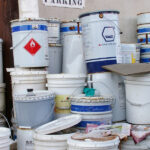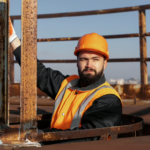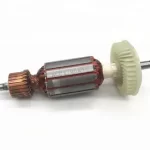
Waste comes in many forms – some more potentially harmful than others. That’s why as a company, it’s important to know the rules around hazardous waste disposal in Ontario to protect the business and the environment.
While you might think hazardous waste is a small fraction of what’s produced by companies on a regular basis, think again. Roughly 20% of the waste produced falls into a hazardous category.
Handling it poorly not only can be a safety hazard, but can also impact your bottom line. Your company could be subject to fines for improper managing of hazardous materials. Regulations were recently finalized that give the Ontario government power to issue monetary penalties (to corporations and individuals) under the Resource Recovery and Circular Economy Act.
This is not to mention potentially damaging the company’s image to customers and vendors from circumventing the rules, which could impact revenue.
Luckily, there are a number of ways to safely deal with hazardous waste once it has been identified. While it can be processed in a number of ways, hazardous waste recycling is also possible with the help from an industry professional such as RPR Environmental.
What are the classifications of hazardous waste in Ontario?
The first step of properly disposing of hazardous waste is to properly categorize it. This way it can be determined whether the material can be reused, such as the case of glycol recycling in Ontario. Some of these products include antifreeze and HVAC fluids, which can be treated to create new glycol-based products.
However, there are several other common hazardous materials that also need to be addressed. They fall into classifications including (but not limited to):
• Gases
• Explosives
• Flammable liquids/solids
• Poison inhalation risks
• Corrosive
• Radioactive
Commonly used products such as car batteries, lubricants, solvents, and even paint are considered to be potentially harmful and therefore are regulated.
Government regulations surrounding hazardous waste recycling/disposal
There are a number of government controls at various levels to ensure proper solvents recycling in Ontario, as well as hazardous waste disposal in Ontario.
For example, while municipal governments set up guidelines to safely collect hazardous waste, the provincial government is in charge of licensing treatment facilities. (RPR Environmental has a fully licensed transfer station as part of its commitment to handling hazardous waste.)
When it comes to responsibility for hazardous waste disposal in Ontario, the province also has Regulation 347, which governs both commercial and residential waste handling and reporting. There is also more onus being placed on producers of hazardous waste to property manage their waste flow.
Under the Hazardous and Special Products (HSP) regulation, applicable producers are responsible for ensuring proper hazardous waste recycling, but it also provides companies choices for resource recovery services such as RPR.
Meanwhile, there are other rules about the transport of dangerous waste across borders, which typically fall under federal jurisdiction. Businesses that export hazardous materials are subject to the Canadian Environmental Protection Act, which dictates proper reporting and permits. However, even moving hazardous waste between provinces is also closely monitored through a tracking system.
Methods for dealing with hazardous waste disposal in Ontario
What happens to the hazardous waste once it has been properly classified and sent to the appropriate transfer station?
There are several methods that are currently being used (or have been used in the paste) to not only treat/destroy hazardous waste, but also give it a second life as a viable product.
Some of the approaches used at home and elsewhere for recycling of hazardous waste include:
• Chemical methods. There are a variety of techniques associated with treating hazardous waste chemically. It can be done through ion exchange (as one example), to remove various harmful elements such as mercury.
• Biological treatment. Hazardous biological waste (including some petroleum products) can be treated through a process that mixes soil with the byproducts, which effectively breaks them down.
• Thermal approaches. Some hazardous waste materials can be incinerated. This can also detoxify the substance in the process.
• Physical methods. In some cases, hazardous materials can go through a physical filtration process, or even be encased in solid materials to ensure it doesn’t leak.
In the case of glycol recycling in Ontario, there are various approaches to neutralizing and recycling depending on the material. In the case of antifreeze, the glycol is drawn into vacuum trucks (part of RPR Environmental’s vehicle fleet), and then heated to separate it from water. Ion exchange can also be used to draw out the harmful components.
All of these methods are highly controlled, and need to be conducted by an expert to prevent injury or environmental harm. However, through solvents recycling in Ontario, many limited resources can be salvaged. Antifreeze can pose a threat to plant life and animals, so preserving them through recycling is important.
Some substances are not subject to hazardous waste recycling, but still need to be handled properly. They can be sent to underground injection sites to ensure they don’t pose a threat to life or the environment.
Choose professional hazardous waste disposal in Ontario
Because of regulations, and to lessen the impact from industrial operations, it’s important to partner with an expert in hazardous waste recycling. Otherwise, it could lead to serious harm to your employees, the environment, and the company’s reputation.
From consumer products to glycol recycling in Ontario, you can rely on RPR Environmental to handle your hazardous waste in a responsible way. Learn more about how RPR Environmental safely transports and treats hazardous waste disposal in Ontario.










